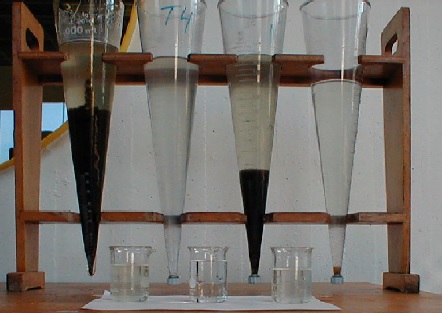Turbidity is no stranger to water quality testers. It is one of the important parameters of drinking water quality when it leaves the factory. The parameter size of turbidity is directly related to the content, size, shape and refractive index of impurities in the water. The turbidity can be used to judge the pollution of suspended substances, colloids and dissolved substances in water, so as to further judge the quality of water quality. Therefore, turbidity is applied to the detection of each link of water treatment. The Sanitary Code for Secondary Water Supply Facilities clearly stipulates that turbidity must be tested.

Harm of turbidity exceeding standard in secondary water supply
When the turbidity of the secondary water supply exceeds the standard, the drinking water will be dirty in color, stinky in smell, and a large number of microorganisms and bacteria will multiply. We also mentioned that turbidity mainly reflects the status of suspended and colloidal matters such as soil, silt, micro organic matter, inorganic matter, plankton, etc. If the turbidity exceeds the standard, it means that there are a lot of such substances in the water, which will first cause the yellow and turbid water. In serious cases, the drinking water will smell bad. Secondly, there is a large number of microorganisms and germs. Because these substances that cause turbidity exceeding the standard will carry microorganisms and germs themselves, they will multiply in the water tanks and pipelines of secondary water supply, thus bringing health risks to the residents who drink.
Relevant standards and limits for turbidity of secondary water supply
At present, the reference standards for testing the turbidity of secondary water supply mainly include GB 5749 Sanitary Standard for Drinking Water and Sanitary Code for Secondary Water Supply Facilities. The sanitary specifications for secondary water supply facilities mainly stipulate the sanitary requirements and water quality requirements for secondary water supply facilities of domestic drinking water. The detection limit of turbidity is specified in the sanitary standard of drinking water. The standard stipulates that the detection limit of turbidity in domestic drinking water shall not be greater than 1NTU, and it is 3NTU when the technical conditions of water source and water purification are limited. For example, it can not be greater than 3NTU in some mountainous areas where water resources are very scarce.
How to detect turbidity
Detection method of turbidity - visual turbidimetry. The turbidity of drinking water and its source water is determined by visual turbidimetry with Formazine as the standard. Formazine standard solution shall be prepared for testing. In addition to this method, there is a commonly used scattered light turbidimeter method, which uses 90 ° scattered light for measurement.
These two methods have their own advantages. The advantage of visual turbidimetry lies in its low cost, while that of scattered light turbidimetry lies in the detection steps and accurate results.



